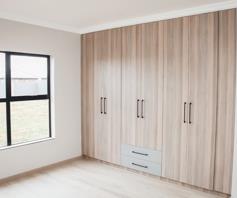While it has become a major trend to buy an older home for renovation or restoration purposes, some homes can be a nightmare to repair and to renovate despite being reasonably priced and being perceived as ‘offering good value for money’.

Trevor Sturgess, Seeff’s MD in Kibler Park, says buyers should watch out for tell-tale signs when it comes to older property that will either assist in picking up a good deal or biting off more than they can chew.
It is extremely important to look for signs of leaks as older homes often have old water pipes that have rusted over the years. These pipes will eventually burst because of the water pressure, and a plumber would need to replace all the pipes. This can be both pricey and time consuming, says Sturgess.
Watch out for leaks from the ground where puddles of water will gather and from the roof where water marks from the ceiling may be visible. Always pertinently ask the agent or seller about water leaks and plumbing issues while viewing the property as these may not always be patent defects.
Sturgess says it is also wise to look at the wooden rafters outside the home as this will give a general idea of how the home has been maintained over the years.
“If wooden rafters are stained or creosoted, measures were obviously taken to preserve them. If they are starting to rot, however, it could mean that you would need to redo the entire roof of the home,” he says.
“It is also important to look at the plaster work on walls - as nasty cracks may have been covered up with Polyfilla.”
He says if cracks aren’t dealt with in the correct manner, they will always return. Follow cracks to see where they go, even if means that you have to climb into the ceiling. Also make a point of asking about cracks and any other issues that may be latent.
You should also check if all light switches and plugs are working, says Sturgess.
Even though it is the law that a home must come with an Electrical Certificate of Compliance (COC), you will be well advised to check basic things like the oven and stove to see if they switch on and heat up.
If there are carpets, ask what is underneath - concrete, tiles or wood flooring?
Sellers will often undertake to fix up problems that buyers have identified, and these should be duly stated in the offer to purchase.
Rather spend enough time investigating the home before you put in an offer, as such a huge investment certainly warrants due diligence, says Steve van Wyk, Seeff’s MD in Centurion.
Before you undertake renovations or restoration, you need to determine if the home you are considering buying lends itself toward either of these processes, says Van Wyk.
Homes that are falling apart will be more difficult, expensive and time consuming to renovate. Also keep factors like the floor layout, supporting walls and location of water pipes in mind before making up your mind about renovation.
Van Wyk says you should also consider whether you will be able to afford the buying price of the home together with all the renovation/restoration costs.
In addition, you should be extremely careful not to overcapitalise on renovating a home - especially in an area that doesn’t typically boast renovated homes.
Lastly, he says to think long term - are the renovations you have in mind going to be expensive to maintain in the long, run and will they add value to the property? Do the sums, compare property prices and then make your decision.








